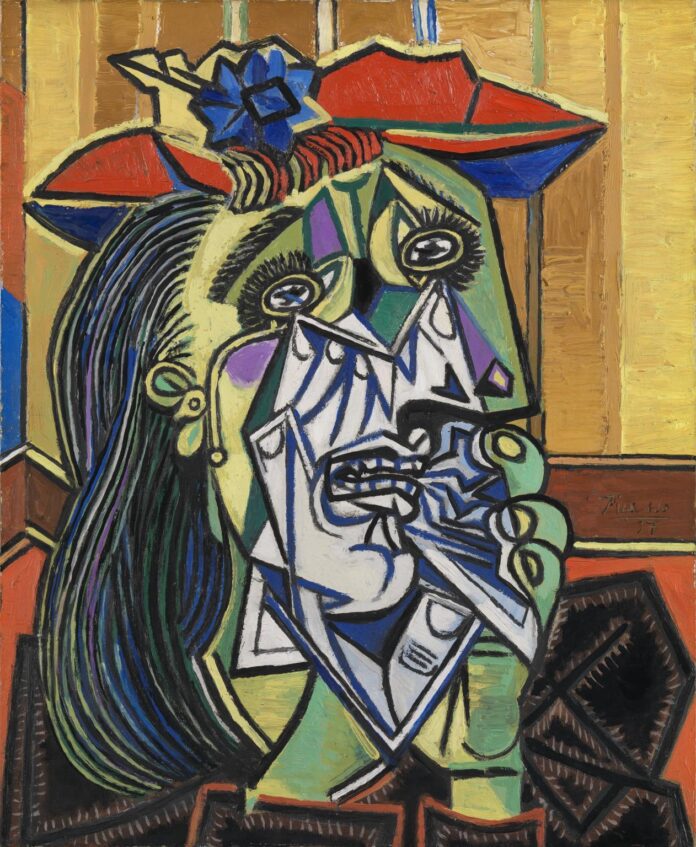
Weeping Woman 1937 Pablo Picasso 1881-1973 Accepted by HM Government in lieu of tax with additional payment (Grant-in-Aid) made with assistance from the National Heritage Memorial Fund, the Art Fund and the Friends of the Tate Gallery 1987 http://www.tate.org.uk/art/work/T05010
Introduction:
Weeping Woman is based on an image of a woman holding her dead child. It is taken from Picasso’s anti-war mural, Guernica. Picasso painted both works during the Spanish Civil War (1936-39). It was in response to the bombing of the Basque town of Guernica. The attack was carried out in April 1937 by Nazi Germany’s air force, in support of Spain’s Nationalist forces. Hundreds of people were killed. The figure of the Weeping Woman is based on artist and photographer Dora Maar. Maar photographed Picasso’s making of Guernica.
Personal Reflection:
I was deeply impressed by the artwork. I state it as a strong emotional backlash against the war. The anti-war significance of this painting is unquestionable. The painting worthes me to analyze and research its emotional arousal. I like how it sharply inserts into the heart of the social conflicts of that time and shocks people with strong emotions.
Women look abstract, fragmented and colorful. To me, she looks like as fragile as glass which shocks my soul. One of the things I admire about Picasso is that he was never afraid to use color in a bold way. Picasso used a variety of colors in the painting including blue, red, yellow, green, purple, brown and black. Many of these colors are considered aesthetically mismatched with each other, but this variety of colors, as well as the background, creates a contrast that shapes a strong emotion. Strong colors, sharp angles, these little tricks to shape emotions never go out of style. Meanwhile, there are many research articles analyzing the emotional theories of the Weaping Women that helped me further my research.
Reference:
Tate. (1970, January 1). ‘Weeping Woman’, Pablo Picasso, 1937. Tate. Retrieved January 17, 2023, from https://www.tate.org.uk/art/artworks/picasso-weeping-woman-t05010



